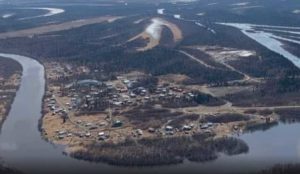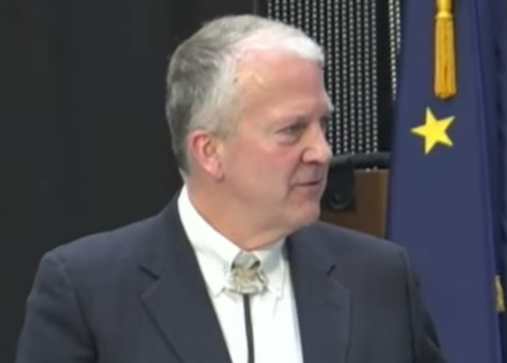
JOINT BASE ELMENDORF-RICHARDSON, Alaska – Response and recovery efforts continue this week in Tuluksak after the community’s water plant was destroyed in a fire last month.
Personnel from the Alaska Department of Military and Veterans Affairs visited Tuluksak Monday and Tuesday. The department’s tribal liaison and an emergency management specialist met with local leaders to tour the temporary water treatment facilities, assess the amount of available potable water, and discuss the community’s plans for short- and long-term solutions.
“Much work has been done to ensure Alaskans in Tuluksak have sufficient potable water supplies,” said DMVA’s Division of Homeland Security and Emergency Management director, Paul Nelson. “We have a long way to go before Tuluksak will have a long-term solution to the water issues they are experiencing, but temporary options remain available, and work to improve the situation continues.”
Donated drinking water has been distributed within the community since the week of the fire and continues to be shipped in regularly, including an additional 10 pallets this week. More than 500 gallons of donated water are currently stored in the Tuluksak Native Council office.[content id=”79272″]
The Kuskokwim ice road to Bethel and Akiak is being maintained and, weather permitting, the communities are able to resupply Tuluksak with potable water, which may be transported with several large water tanks that were donated to the village.
The Yukon Kuskokwim Health Corporation established a temporary non-potable water supply with a 1,600-gallon holding tank capable of producing 12 gallons of water per minute. With additional filters, the water may be able to qualify as a potable water source for the community.
The Alaska Department of Environmental Conservation determined that water from the Tuluksak and Kuskokwim Rivers may be used as a source of drinking and cleaning water after it has been boiled.
Water was supplied to the school to charge the sprinkler system, and plans are now underway to repair several leaks that were discovered, which should allow the school to reopen within two weeks.
A multi-agency group continues to discuss long-term funding solutions. Indian Health Service, Bureau of Indian Affairs, U.S. Housing and Urban Development, and State of Alaska funds may be utilized to address rebuilding efforts.
“The State of Alaska is committed to working with the community, regional partners, non-government organizations, and the private sector to see them through this disaster,” said Nelson.
###








